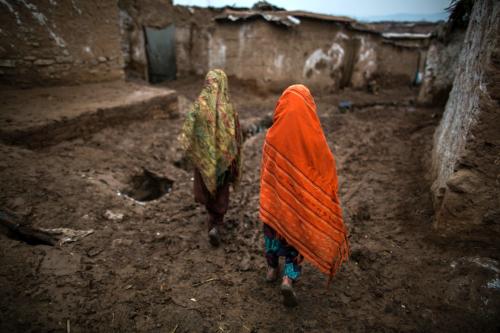Criteria for distinguishing poor from non-poor tend to reflect specific national priorities and normative concepts of welfare and rights. However, a universal poverty line is needed to permit cross-country comparison and aggregation. This global poverty line is inevitably somewhat arbitrary.
— World Development Report (1990)
The World Bank has used an international poverty line, originally the “dollar a day” line, since at least 1990 to monitor global poverty. In recent years, the line has come under criticism for being too low in value. And indeed, it is significantly lower in value than how most of the world defines poverty. There is a reason for this. The international poverty line used by the World Bank is an average of national poverty lines from some of the poorest countries in the world, intended to reflect a measure of extreme poverty. Its current level is $1.90 a day (in 2011 Purchasing Power Parity dollars). But, as noted above, the architects of the international poverty line and the authors of the 1990 World Development Report were aware of the potential criticisms of this approach.
When the World Bank convened the Commission on Global Poverty in 2015, the criticisms were foremost in the minds of its members. Indeed, the mandate of the commission, in its own words, was: How should the World Bank measure of extreme poverty be monitored between now and 2030, and what other kinds of poverty indicators should guide policy?
After a lengthy deliberation, the commission provided clear recommendations to the Bank. For historical continuity and to keep the attention focused on the most deprived populations, it suggested the World Bank continue monitoring and reporting global extreme poverty. “Poverty and Shared Prosperity 2018: Piecing Together the Poverty Puzzle,” the second report in the series, provides the most recent extreme poverty estimates. In 2015, 10 percent of the world was living in extreme poverty, the lowest level yet (Figure 1). But we might be entering the hardest stretch in the march toward the end of extreme poverty. The report shows that poverty is increasingly concentrated in sub-Saharan Africa, and one likely explanation is that economic growth in the region has been less effective at pulling the poor out of poverty than in other regions.
The commission also urged the World Bank to consider a suite of complementary measures to enrich the existing approach. In responding directly to the commission’s recommendations, the recent World Bank report breaks new ground. To construct a more complete picture of poverty, it presents two new sets of poverty lines. The first are poverty lines at higher thresholds—$3.20 and $5.50 per day (in 2011 Purchasing Power Parity dollars)—reflecting typical national poverty thresholds in lower- and upper-middle-income countries. By these criteria, more than a quarter (at the $3.20 line) and almost half of the world’s population (at the $5.50 line) were poor in 2015 (Figure 1).
The report also introduces a societal poverty line that increases in value as a country gets richer—a global poverty line that reflects the variation in national poverty lines observed across the world. It is a recognition that poverty is a deeply social and relative experience, so it cannot be detached from the social context of the individual. A refrigerator may be a luxury in a poor country, but it is essential to basic functioning in rich countries. When judged by the relative standard of the society in which they live, almost 3 in 10 individuals were living in poverty in 2015. The introduction of higher poverty lines and the societal poverty line help us pay attention to the poor living in middle-income countries.
Consumption (or income) approximate people’s living standards, but they are far from complete. This recognition is the impulse for the Bank’s proposed multidimensional measure. It adds to the extreme poverty rate the deprivations experienced in education and basic infrastructure services. These services, typically provided through the public sector, are not captured in household’s private expenditures. Using this broader definition of poverty, the share of the world’s population in poverty circa 2013 rises by almost 50 percent (from 11.8 to 18.3 percent).
Finally, the latest report departs from the current approach which takes the household to be the primary unit of analysis and assigns the same poverty status to all individuals within a household. A household is a useful analytical construct, but of course there is no sentient entity called a “household” that experiences poverty. The report looks inside the household to explore poverty as experienced by individuals, which depends on the interaction of individual needs and intrahousehold distribution of resources. Indeed, there is evidence that there are poor women and children living in non-poor households. The bulk of the evidence suggests that women and children bear the brunt of poverty disproportionately, although there is considerable variation by region.
The new measures are not without flaws, and lack of timely, high-quality data to monitor poverty in all its forms everywhere remains a challenge. Despite these limitations, close observers of the World Bank would agree that the latest report breaks the mold. It stays centered on its core mandate of monitoring global extreme poverty, while offering a rich menu of complementary indicators that are relevant to a growing world and that encompass poverty in its multiple forms. This represents a sea change in how the World Bank views and monitors poverty.
When asked about the state of the world, Hans Rosling, the data guru, was fond of quipping: “Bad, but better.” Similarly, this year’s Poverty and Shared Prosperity Report shows that while remarkable progress has been made in reducing extreme poverty, much remains to be done to eliminate poverty in all countries, in all aspects of life, and for all individuals.







Commentary
Why the World Bank is taking a wide-angle view of poverty
November 14, 2018